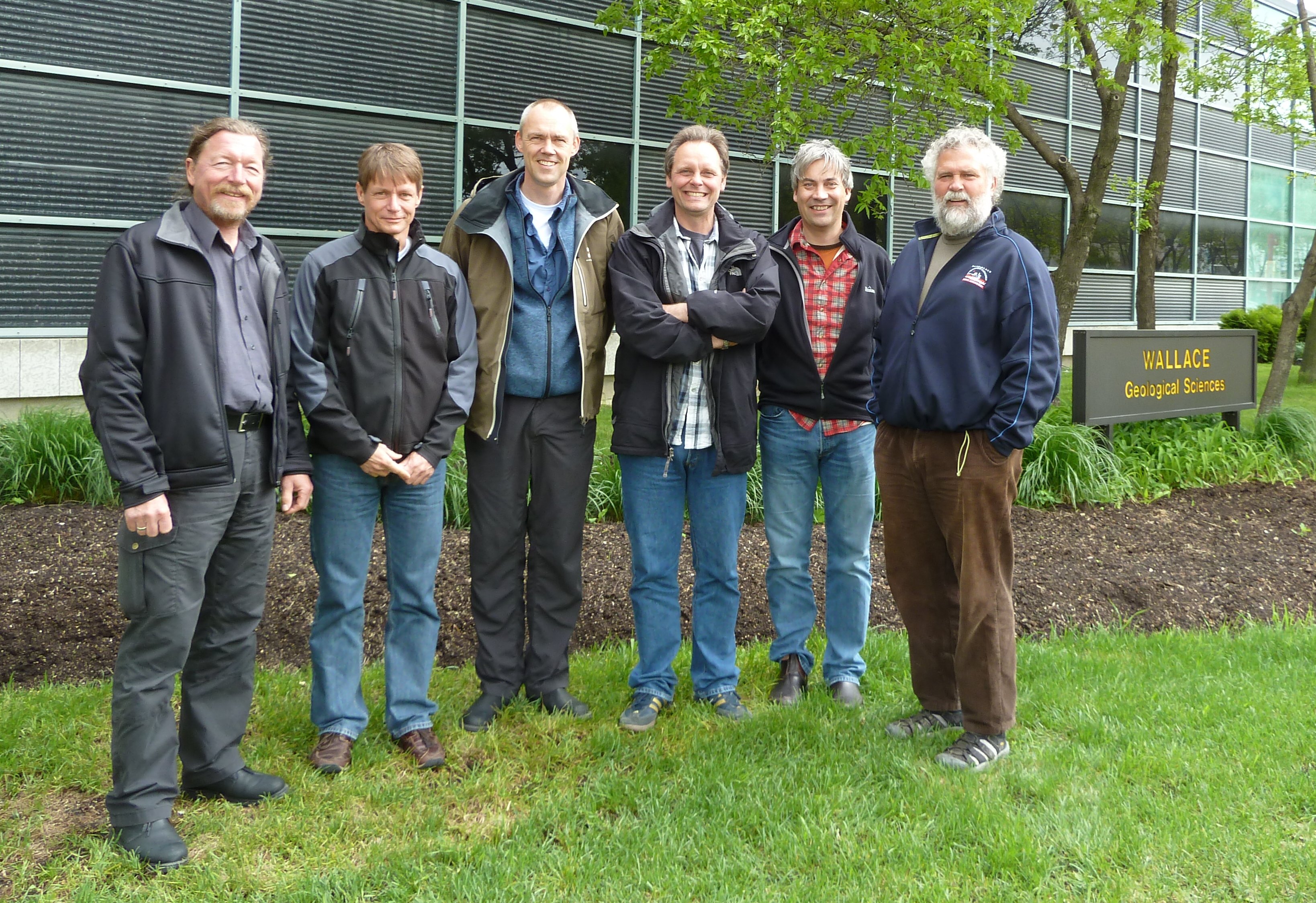Vision & Mission

First ASP Annual Meeting, 12-16 Nov. 2012, Gimli, Canada. Photo: Peter Bondo Christensen
Vision & Mission
Vision
The Arctic Science Partnership will be a leading consortium on climate, cryosphere, ecosystems, and human interactions through research, monitoring and education.
Mission
To facilitate and integrate active scientific cooperation between the ASP and its members.
Strategies
- Joint projects, field campaigns, workshops
- Sharing facilities (labs, instruments, field stations, logistics, ships)
- Joint positions (staff, technicians, students, visiting scientists)
- Joint observatories and data sharing
- Joint publications and acknowledgements
- Education, outreach and capacity building in the Arctic
- Collaborative work on industry relevant assessments
- Development of new environmental Arctic technologies
- Information dissemination
Memorandum of Understanding

The Arctic Science Partnership (ASP) founding group in front of the Clayton H. Riddell building at University of Manitoba, Winnipeg, 31 May 2011: From left: Peter Schmidt Mikkelsen (GINR), Jesper Madsen (AU), Søren Rysgaard (GINR/AU/UoM), Ronnie Glud (SDU), Torben Røjle Christensen (AU/GINR), David Barber (UoM).
- The initial founding of the Arctic Science Partnership (ASP) cooperation took place at a founder group meeting in May- June 2011in Winnipeg.
- A Memorandum of Understanding was singed at a meeting in Nuuk on June 8th 2012 between the Aarhus University (AU), Greenland Institue of Natural Resources (GINR), and the University of Manitoba (UoM).
- In 2016-17 the Alfred Wegener Institute (AWI) also became a partner of ASP.
- In 2019 a Memorandum of Understanding was signed between ASP and Fisheries and Oceans Canada (DFO).
- In 2020 a Collaboration Agreement was signed between ASP and Norwegian University of Science and Technology (NTNU)
- In 2020 a Memorandum of Understanding was signed between ASP and University of Copenhagen (UCPH)
8 QUESTIONS GUIDING ASP RESEARCH
- How does climate change impact the Arctic cryosphere and what are the implications for the cryosphere’s interactions with land, ocean and atmosphere?
- What controls the marine and atmospheric transport of contaminantsto the Arctic?
- How can proxies of palaeoclimate/ecology inform us of changes in ocean current, wind systems, precipitation, future Arctic climates and their ecological consequences?
- What are the consequences of these drivers (1-2) for i) ecosystem productionand function? and ii) chemical contaminants affecting ecosystems and human exposure?
- What are the impacts of the transition and environmental changes on the Arctic population’s lifestyle and changes in disease patterns?
- What will be the combined effects of natural and anthropogenic forcing on ecosystems and their services?
- How can technology developments and implementation help us to connect scientific data needs with operational capability in the Arctic?
- What are the feedbacks between the Arctic and Earth climate system?





